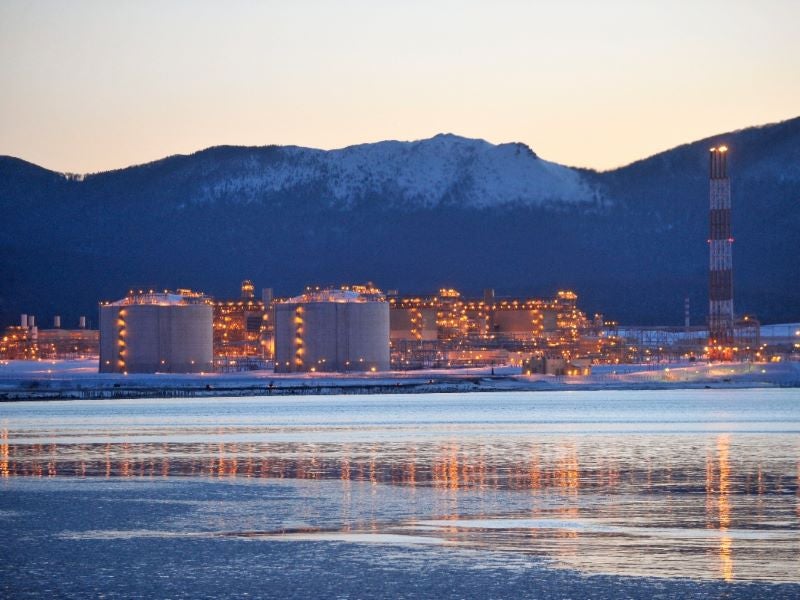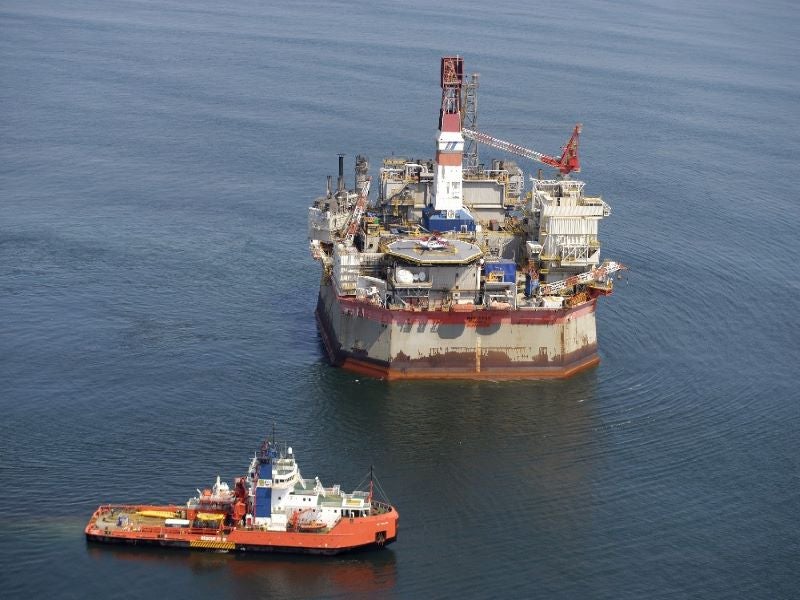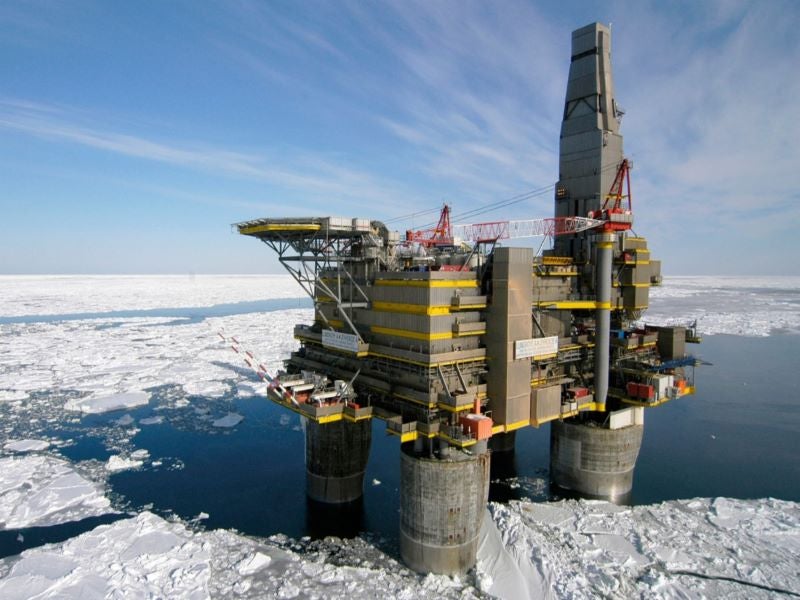The Sakhalin-2 project, located on the Sakhalin Island, Russia, is one of the biggest integrated oil and liquefied natural gas (LNG) projects in the world. It also represents the first offshore gas project and the first LNG plant in Russia.
The project comprises both offshore and onshore facilities and is operated by Sakhalin Energy Investment Company (Sakhalin Energy), a joint venture between Russian state-owned firm Gazprom (50%), Shell (27.5%), Mitsui (12.5%) and Mitsubishi (10%).
Shell announced to withdraw from its joint ventures with Gazprom, including Sakhalin-2, due to Russia’s invasion of Ukraine in February 2022.
The Sakhalin-2 integrated oil and gas project was developed in two phases with an estimated investment of $20bn. It involved the development of the Piltun-Askokhskoye oil field and the Lunskoye gas field. Sakhalin Energy signed a production sharing agreement (PSA) for both the fields in 1994.
The development consists of three fixed offshore production platforms, offshore and onshore pipelines, an onshore processing facility, an LNG plant, and an oil export terminal with a tanker loading unit. The Sakhalin-2 oil and LNG export terminals commenced operations in December 2008 and February 2009, respectively.
Piltun-Astokhskoye and Lunskoye fields location and reserves
The Piltun-Astokhskoye and Lunskoye fields are located in the Sea of Okhotsk, off the coast of the Sakhalin Island, Russia.
The two fields were estimated to hold 1.2 billion barrels of crude oil and 500 billion cubic metres (bcm) of natural gas reserves, as of May 2003.
Sakhalin-2 phase one development details
The Sakhalin-2 phase one included the development of the Piltun-Astokhskoye oil field and the Vityaz production complex that came on stream in 1999.
The Vityaz production complex consisted of the PA-A platform (Molikpaq) installed in 30m-deep waters in the Astokh area, 16km away from the shoreline, along with a single anchor leg mooring (SALM) buoy, a subsea pipeline, and the Okha floating storage and offloading (FSO) unit.
Molikpaq is the first offshore oil production platform in Russia. It was producing only oil during the summer months until 2008. The SALM and Okha FSO were decommissioned after Molikpaq commenced year-round production in December 2008.
The Molikpaq platform was operating with 17 oil production wells, seven water injection wells, and one cuttings reinjection (CRI) well, as of December 2020. The platform has the capacity to produce 90,000 barrels of oil and 1.7 million cubic metres (Mcm) of associated gas a day.
It had produced more than 308 million barrels of oil as of December 2020, since it became operational in 1999.
Sakhalin-2 phase two development details
The Sakhalin-2 phase two development was launched in 2003. It included the installation of the PA-B and the Lunskoye-A (Lun-A) platforms, as well as the construction of the TransSakhalin pipeline system and the Sakhalin-2 LNG plant. The second phase targeted year-round oil and gas production from all the three platforms of the project.
The PA-B platform was installed in 32m-deep waters in the Piltun area of the Piltun-Astokhskoye field, 12km off the north-eastern coast of the Sakhalin Island.
The platform’s topsides sit on a four-legged concrete gravity base structure (CGBS) installed in August 2005.
Operational since December 2008, the PA-B platform has the capacity to produce 70,000 barrels of oil and 2.8Mcm of associated gas a day.
It was operating with 20 production wells, eight water injection wells, and two CRI wells by the end of 2020. The platform had produced 141 million barrels of oil as of December 2020, since commencing operations in 2008.
Lunskoye gas field development details
The Lunskoye gas field was developed in phase two of the Sakhalin-2 project to supply natural gas to the Sakhalin-2 LNG plant. The Lun-A platform, which produced its first gas in January 2009, is the first offshore gas production platform in Russia.
The Lun-A platform’s topsides sit on a four-legged CGBS and are powered by electricity supplied through a subsea cable from the onshore processing facility.
The platform was connected to 19 production wells and two CRI wells as of December 2020. It has a gas production capacity of 51Mcm a day and an associated condensate production capacity of 50,000bpd.
The cumulative gas production from the platform exceeded 189bcm as of December 2020.
Sakhalin-2 LNG plant details
The Sakhalin-2 LNG plant, which commenced production in February 2009, comprises two LNG processing trains of 4.8 million tonnes per annum (Mtpa) capacity each.
Other components of the LNG export facility include nitrogen and air production units, instrument air systems, water and wastewater treatment plants, flare units, two 1,600m3 refrigerant storage spheres, two 100,000m3 LNG storage tanks, and an LNG jetty to serve LNG tankers of 18,000m3 to 145,000m3 capacity.
The plant also houses four General Electric (GE) Frame 7EA gas turbines to power the LNG process trains and five GE Frame 5 gas turbines to provide electricity at the site.
Shell licensed its double mixed refrigerant (DMR) technology for the Sakhalin-2 LNG production plant.
The LNG plant is housed in the Prigorodnoye production complex, on the coast of the Aniva Bay, in southern Sakhalin Island, 15km to the east of Korsakov. The complex also includes an oil export terminal (OET) with a remote tanker loading unit (TLU), located 5km off the coast.
The Sakhalin-2 LNG plant produced and exported a record volume of 11.6 million tonnes (Mt) of LNG in 2020, which was 20.8% more than its design capacity of 9.6Mtpa. The LNG from the Sakhalin-2 terminal is exported to Japan, South Korea, Taiwan, China and Singapore. The plant supplied more than 3.2% of the global LNG demand and 4.6% of the Asia-Pacific demand in 2020.
Sakhalin-2 onshore processing facility details
The onshore processing facility (OPF) for the Sakhalin-2 project is located on a 62.2ha-site in the north-eastern part of the Sakhalin Island.
Operational since 2008, the OPF performs initial treatment of gas and condensate from the Lunskoye field, as well as the oil and associated gas produced at the PA-A and PA-B platforms.
The processed oil and gas are transported through the TransSakhalin pipeline system to the oil export terminal and the LNG plant at the Prigorodnoye production complex. The OPF has the capacity to process 51Mcm of gas and 60,000 barrels of condensate/oil a day.
Contractors involved
Aker Kvaerner Technology and Quattrogemini were involved in the engineering and construction of the CGBS for the PA-B platform, while the platform deck was constructed in Samsung Heavy Industries’ construction yard in South Korea.
Tecon was subcontracted to transport and install the topsides of the Lun-A and PA-B platforms.
A consortium of Starstroi, LUKoil-Neftegazstroi, Saipem and AMEC Spie Capag was contracted for the engineering, procurement and construction (EPC) of two 800km onshore pipeline systems for the project.
GE Oil & Gas was awarded a 16-year contract extension, worth £221.2m ($333m), to provide maintenance services for the gas turbines at the Sakhalin-2 LNG plant in March 2013.
Petrofac was awarded a contract worth more than £539.4m ($700m) to deliver the inlet separation and feed gas compression facilities, a new flare system, utilities, substations and associated buildings for the Sakhalin-2 OPF in September 2017. The contractual scope also included a temporary beach landing facility and brownfield tie-ins to the existing OPF.
SST Energomontazh was selected by Petrofac to supply electric heating systems for the booster compressor station of the Sakhalin-2 OPF in July 2019.
Velesstroy was subcontracted by Petrofac to provide civil, mechanical, electrical, instrumentation and telecom (CMEI) works for the OPF compression project in October 2019.
Wood Group was contracted to provide technical support services including brownfield drilling upgrade services over a period of five years for the Sakhalin-2 project in May 2017.
Svitzer bagged a ten-year marine service contract extension to deliver towage services to the Sakhalin-2 project in March 2020. The contract extension is expected to take effect in November 2022.





